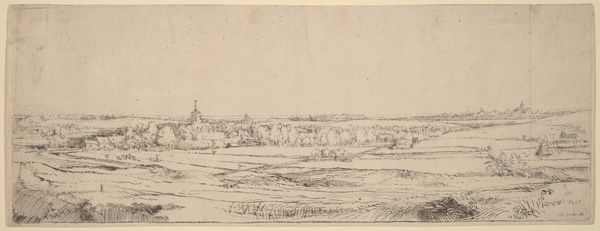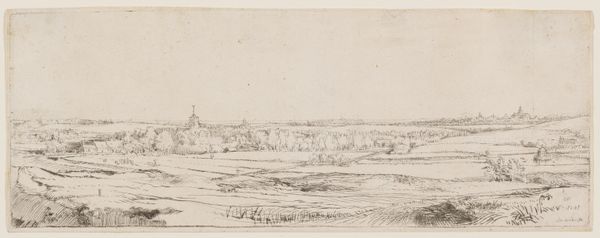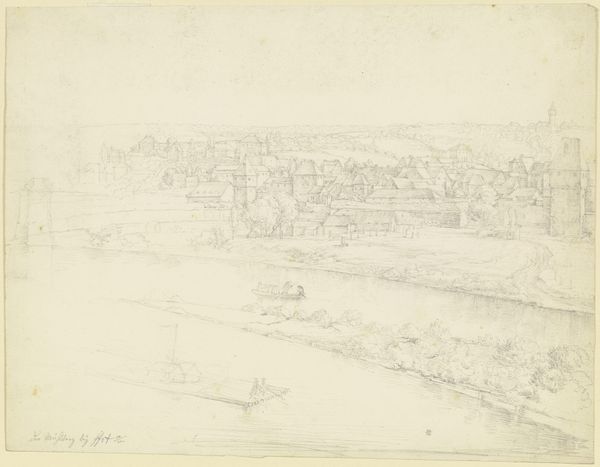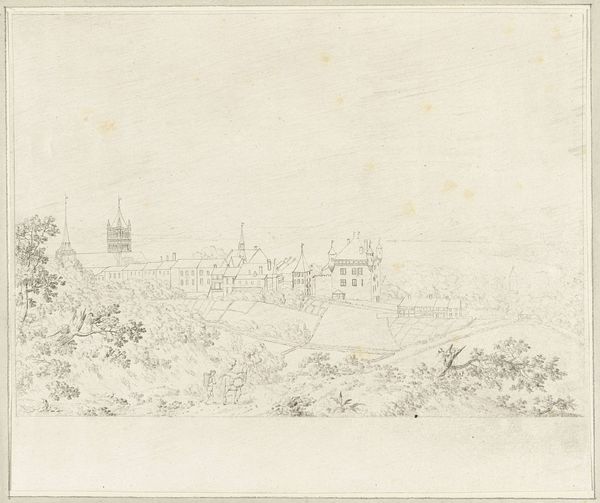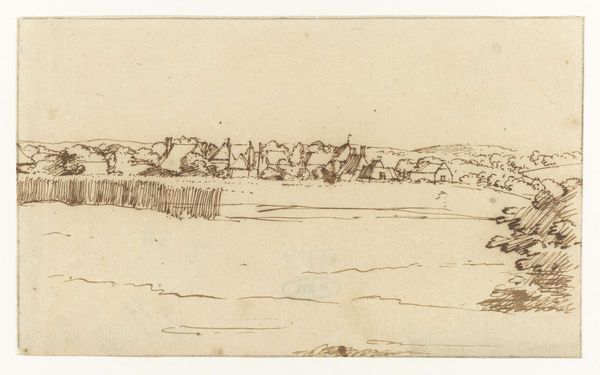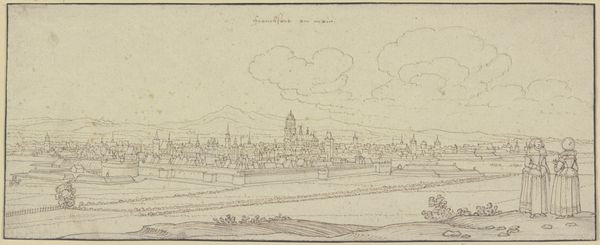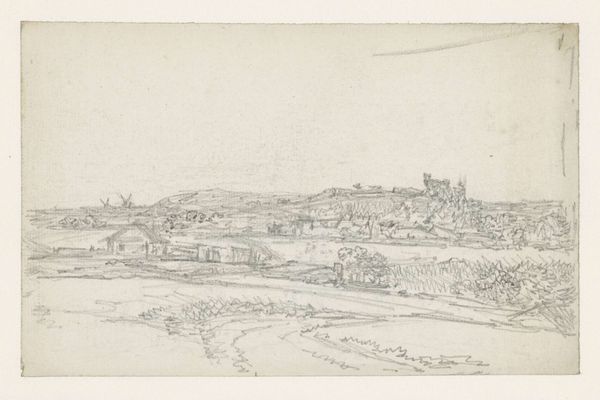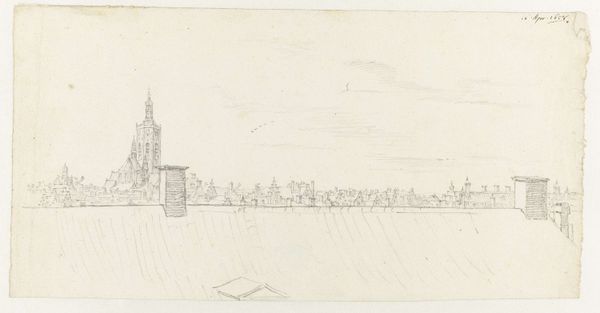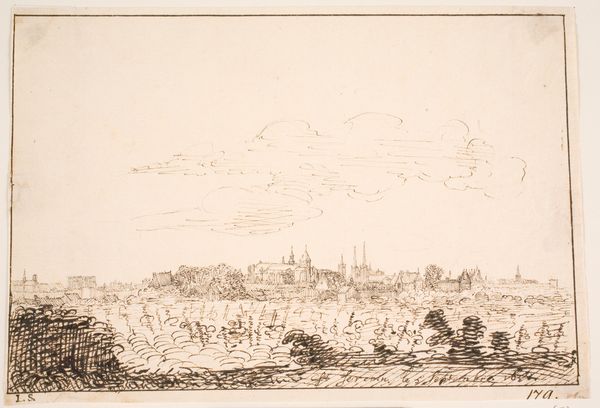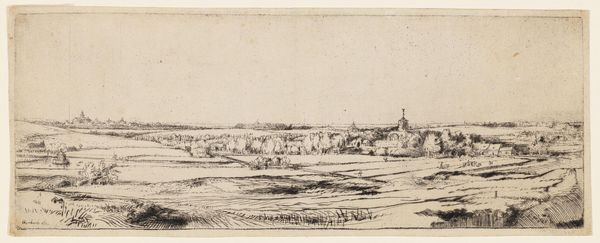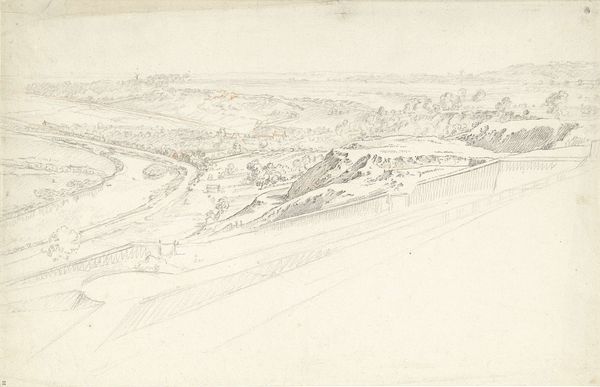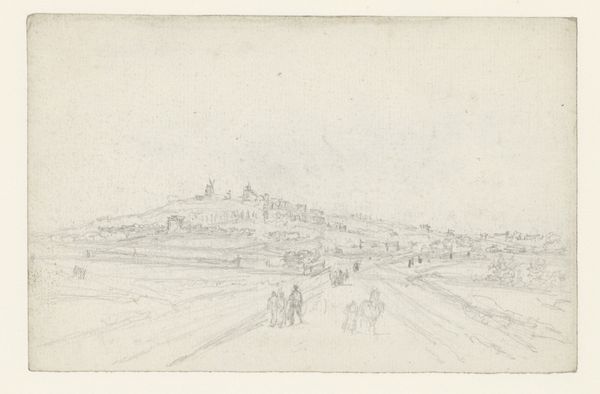
drawing, ink, pen
#
drawing
#
baroque
#
pen sketch
#
landscape
#
etching
#
ink
#
pen-ink sketch
#
pen work
#
pen
Dimensions: height 103 mm, width 170 mm
Copyright: Rijks Museum: Open Domain
Editor: This is "Kasteel bij Linsmeau," a pen and ink drawing, possibly from 1675, by Constantijn Huygens II. It's rendered with such delicate lines, creating a panoramic view of the castle against a wide agricultural landscape. The scene is quite pastoral. What stands out to you about it? Curator: Immediately, the use of pen and ink signals something about the labor involved. The drawing medium suggests a readily available, portable, and reproducible technology. Consider how ink production at that time involved grinding, mixing, and a knowledge-based practice embedded within a community. Does the quickness of the sketch challenge or reinforce the tradition of landscape painting as a commissioned product? Editor: That’s an interesting way to frame it. The spontaneity makes it seem almost… journalistic? Like a visual note rather than a formal portrait. Curator: Exactly! It asks us to consider the intent of the artist. Was this a study, a personal reflection, or something destined for a larger work? The pen allows for a rapid capturing of space and place that prefigures later reproductive technologies. Who would have consumed these images and where? Did Huygens intend for the broader populace to have access to it? The sketch invites us to speculate on access and privilege surrounding landscape. What are your thoughts on the implied scale of the fields depicted here? Editor: I see them as reflective of the agricultural practices of the time – long, cultivated tracts of land signifying both ownership and the products of the harvest. Is this intended as documentation or aesthetic creation? I wonder if we can see in his drawing the tensions between land use, labour, and ownership? Curator: Precisely. Huygens' drawing reveals how the castle functions within the economy. Considering that landscape art emerged alongside capitalism, how can we not see the impact on artistic production? Editor: I hadn't considered the materials in that light, but it really grounds the artwork in its specific historical and economic context. Curator: Indeed. It urges us to look at the social relations embedded in even seemingly simple drawings like this one.
Comments
No comments
Be the first to comment and join the conversation on the ultimate creative platform.
